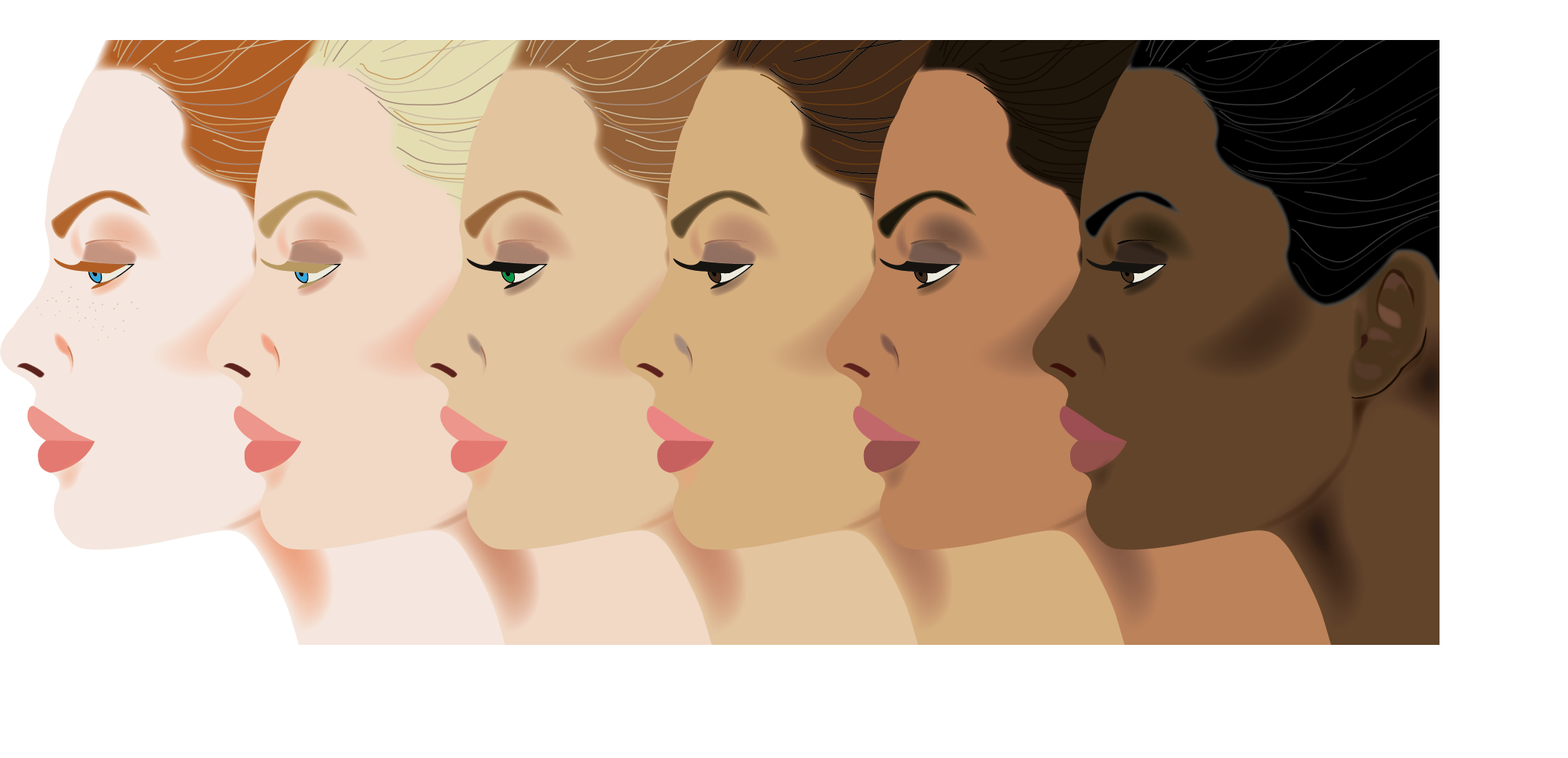The skin is the largest human organ and is the body's first line of defence. Although the skin of every human being performs the same function, it can have many different appearances due to differing amounts of pigmentation. Skin is therefore grouped into a number of different 'types', which are represented on the Fitzpatrick Scale.
Your skin type can affect many different things, such as proneness to wrinkles and other visible signs of ageing, likelihood of developing acne, resistance to the penetration of UV radiation and how well scars heal. On the Fitzpatrick Scale, skin types are grouped according to the person's genetic predisposition to melanin, the chemical that gives skin its pigmentation. Dermatologists use the scale to determine risk factors for things like sunburn, skin cancer, scarring risks and hyperpigmentation.
The Fitzpatrick Scale lists six different skin types. Note that, when identifying your skin type, you should look at skin that is not regularly exposed to the sun: the skin on the stomach will give an accurate guide.

- Type 1 is the fairest and is often freckled with a naturally reddish undertone. People with Type 1 skin are likely to have blonde or red hair with porcelain or very pale skin. They are very likely to burn after sun exposure but have a low potential for scarring.
- Type 2 skin is fair or cream coloured. People with Type 2 skin tend to have light hair and blue or brown eyes and are more likely to burn than tan. The risk of scarring is low unless the wound is slow to heal.
- Type 3 skin is slightly darker than Type 2 but still fair with golden skin tones. People with Type 3 skin may have brown or green eyes and tan easily, however may burn with long exposure to the sun. Type 3 skin has a higher scarring potential than Type 1 or 2.
- Type 4 skin is described as olive or caramel toned, typically with hazel or brown eyes and dark hair. Type 4 skin tans very easily and may still burn with long sun exposure. Type 4 skin scars easily.
- Type 5 skin ranges from olive to a rich brown. People with Type 5 usually have brown eyes, dark hair and tan very easily. Type 3 skin very rarely burns but has a high risk of scarring.
- Type 6 skin ranges from deep mahogany to very dark brown. People with Type 6 skin usually have dark brown eyes and black hair, tan quickly and easily but are at very high risk of abnormal scarring.
One of the best methods to treat problem scarring, including keloid and hypertrophic scars, is with the application of silicone. Traditionally, silicone gel sheeting is used though some people find this difficult to use. Jobskin are proud to supply an equally-effective alternative in the form of ScarSil, a topical silicone gel.
To find out more about ScarSil Topical Gel, check the product page on the Jobskin website. Look out for next week's article that will show you just how effective and easy the product is to use: subscribe to our newsletter so you don't miss out!